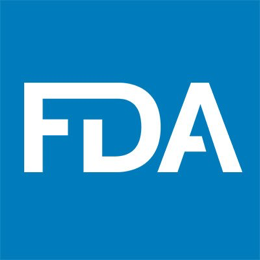FDA’s John Whyte: Industry Does Not Fully Grasp Patient Centricity
As the discussion on patient centricity continues, industry personnel are attempting to further define the concept. John Whyte of the FDA sits down with us to explain his perspectives and experiences on the subject.
The discussion on patient centricity continues, as personnel from the FDA and the biopharmaceutical/medical device industry attempted to further define the concept at eyeforpharma’s Patient Centered Clinical Trials conference. In this interview, John Whyte, Director of Professional Affairs and Stakeholder Engagement at the FDA will elaborate on his perspectives and experiences on patient centricity.
Moe Alsumidaie: Is the industry properly engaging patients in clinical trials?
John Whyte

John Whyte: There is a dramatic change in terms of patient involvement in clinical trials. Where we were five years ago versus where we are now is vastly different. It is important for the agency and the Center for Drugs to make sure that we measure things that are clinically meaningful to patients. The center director, Dr. Janet Woodcock, often likes to talk about the fact that patients are expert in their diseases and that we need to talk to these experts to truly understand what is meaningful to them.
But the reality is that when we hear from patients and patient groups at the agency, it is often when a drug is already under review or there is an advisory committee meeting. I would argue that's not the most effective time to engage with patients; the most effective time is during the development of a clinical trial. Industry often talks about patients in the context of marketing, or whether they are being patient focused or patient centered. But there often isn't enough inclusion early on, in terms of how do you choose outcomes that matter to a patient; patient centricity is about measuring outcomes that are reproducible, validated, and that are representative of patients.
We are definitely trying to change that with the creation the Office of Professional Affairs and Stakeholder Engagement, and having patient-focused drug development meetings. While we are still in the early phases, we are trying to change how we can truly measure what is clinically meaningful to patients.
MA: Does the industry truly understand the concept of patient centricity?JW: I don't think industry has included patient involvement throughout the drug development process by any means. Historically we have seen that. Being a government official in a regulatory agency, I constantly hear feedback from folks who are unhappy about the process. I'm okay with that because it shows me that there is a need for change. But when I hear discussions from the industry about patient involvement, I hear, ‘how do I enroll more people in my clinical trial?’ That is not what the discussions should only be about. I think the discussions should be geared towards incorporating patients in the all phases of clinical trial development and thinking about why we bring a drug to market.
Where has the industry involved patients to ask, "what outcome is meaningful to the patients I'm going to serve?" "where is my clinical trial diversity because I think there is variability of drug response?" That's a different discussion than getting more people to enroll in clinical trials by making it easier for them, and sending them a thank you note. For example, for patients suffering from migraine, we should be asking “what are the appropriate outcome measures than simply complete the resolution of a headache?" On a neurodegenerative disease, "is the six-minute walk test the most appropriate test or is it upper strength mobility so that patients can feed themselves and their caregivers can better function?" We should be having these conversations early on and that’s when it’s most important.
MA: Where do you think this disconnect is arising from?

JW: I recently attended a very interesting meeting in Germany at DIA Europe where one of the persons on the executive committee of a biopharmaceutical company said that they know how to get a drug approved but when it came to patient engagement, he wasn’t sure what he needed to do to meet regulatory requirements. Part of the disconnect can be the criticism of the agency: that the industry will look for measures that are required and for guidance, and they are very good at following that regulatory roadmap to approval. But other than implicitly saying that patient engagement is important, they still don’t understand what patient centricity means.
It is possible the disconnect may be arising from the C-suite level folks in the industry, and when they invest in areas to get a medical product approved. Someone mentioned that none of these Chief Patient Officers sit in the C-suite, so what authority do they have? Are they deciding over inclusion/exclusion criteria of clinical trials? Are they deciding how resources are spent in the company? Are they a member of the executive committee? Are they intricately involved in research? Or do they organize meetings? It would be good to understand the role of the Chief Patient Officer. Patient centricity is an exciting process, but we all need to be talking about the same thing. The challenge is that "patient-centered" or "patient-focused" means different things to different people. We all think we are saying the same thing, but in reality, there is a disconnect.
MA: There is a lot of speculation on changes in the healthcare system. Can you elaborate on these changes, and how those changes would impact drug development?JW: I have no idea whether we will move to a single-payer system, although I don't think that is currently something that has a lot of support in Congress. I do hear a lot about 21st-century cures. I hear a lot about expanded access. What I hear is that patients want and need access to drugs earlier on. They want to be involved in the process. I do not think that's going to change. The information about clinicaltrials.gov and posting information is something that both the FDA and NIH plan to enforce. Also in my work at the FDA, we are posting demographic data of all the people who participate in clinical trials for new approved molecular entities. There's going to be more discussion about who is participating in clinical trials, variability of drug response in clinical trials and measuring outcomes that are clinically meaningful to patients. I think those are some of the hot issues in terms of patient-centered clinical trials and getting access especially to life-saving therapies.
eyeforpharma’s Data and Technology in Clinical Trials 2017 takes place February 21-22 in Philadelphia.
FDA Fast Tracks Johnson & Johnson’s Nipocalimab for Fetal Neonatal Alloimmune Thrombocytopenia
March 27th 2024Johnson & Johnson is moving forward with a pair of Phase III trials of nipocalimab to reduce the risk of fetal neonatal alloimmune thrombocytopenia in alloimmunized pregnant patients.